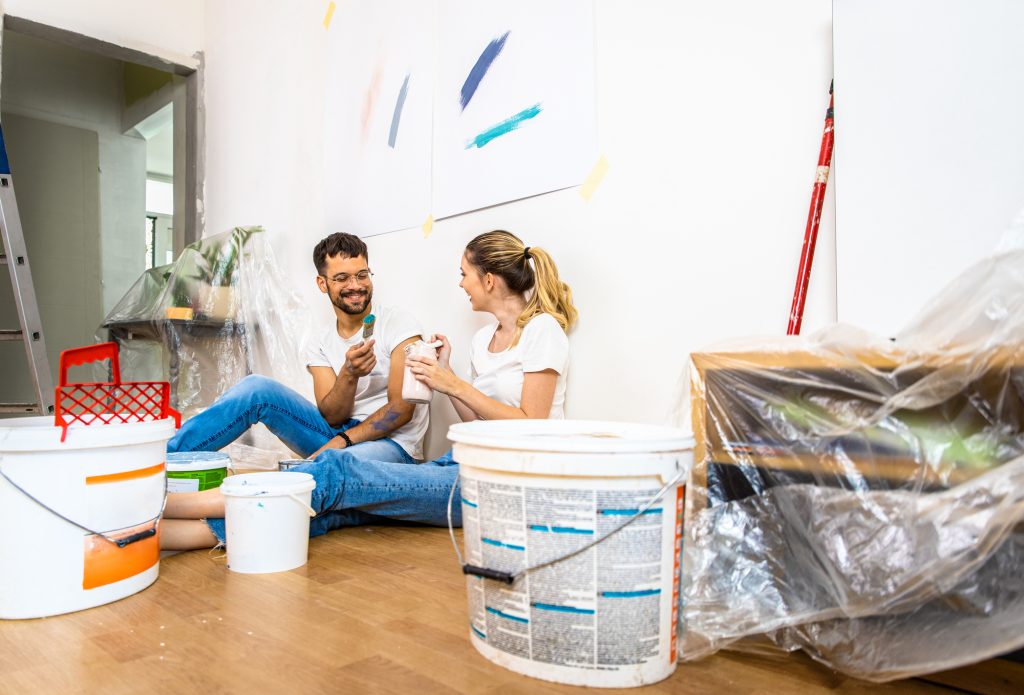That fresh coat of paint can transform your home completely, but as you stand in the hardware store eyeing those colour swatches, you might wonder: Should I tackle this myself or call in the professionals?
Before you don your overalls and grab a roller, let’s explore what’s really involved in DIY painting.
The Advantages of DIY Painting
Cost Savings
The most obvious benefit of DIY painting is the potential to save on labour costs. Professional painting services include skilled labour that typically accounts for 60-70% of your total project cost. By handling the work yourself, you’re essentially paying yourself that portion.
Flexibility with Timing
When you’re the painter, you set the schedule. Want to paint at midnight while listening to your favourite podcast? No problem. Need to spread the work across several weekends? That’s entirely up to you. This flexibility can be particularly valuable if you’re working around family commitments or work schedules.
Personal Satisfaction
There’s genuine pride in stepping back and admiring walls you’ve painted yourself. That sense of accomplishment when you transform a room with your own hands creates a special connection to your home that simply hiring someone can’t match.
The Challenges of DIY Painting
Time Commitment
What professionals might complete in a day or two could take you an entire week of evenings and weekends. Proper painting involves thorough preparation, multiple coats, and clean-up, all of which take considerable time when you’re learning as you go.
Quality Considerations
Professional painters bring years of experience to your walls. They know exactly how to:
- Achieve clean, straight lines where colours meet
- Apply paint evenly without visible roller marks
- Properly prepare surfaces for lasting results
- Handle tricky areas like cornices and architraves
Hidden Costs
While you save on labour, DIY painting often involves purchasing equipment you might use just once. The cost of quality brushes, rollers, drop cloths, painter’s tape, and other tools adds up quickly. And if mistakes happen (they often do), you’ll need additional paint and materials to correct them.
Physical Demands
Painting is surprisingly physical work. Hours of reaching, bending, and climbing ladders can leave you with aching muscles, particularly if you’re not accustomed to this type of activity. Ceiling painting, especially, can be a literal pain in the neck!
When DIY Makes Sense
DIY painting works best for:
- Simple, single-room projects
- Walls that are in good condition, needing minimal preparation
- Standard-height ceilings
- When you have a genuine interest and some basic skills
- When you have ample time to complete the project properly
When to Call the Professionals
Consider professional painters when:
- You’re repainting multiple rooms or your entire home
- Your project involves high ceilings or stairwells
- Walls need significant preparation or repairs
- You want specialty finishes or techniques
- You need the job completed quickly and to a high standard
Many homeowners find a balanced approach works best. Perhaps you handle the simpler spaces yourself while bringing in professionals for the more challenging areas. Or you might prep the walls yourself, but leave the actual painting to the experts.
At Hammer and Brush, we understand the appeal of DIY projects. We’re also here when you decide some aspects are better left to experienced hands. Ready to discuss your painting project? We’re just a call away.
Related posts:


